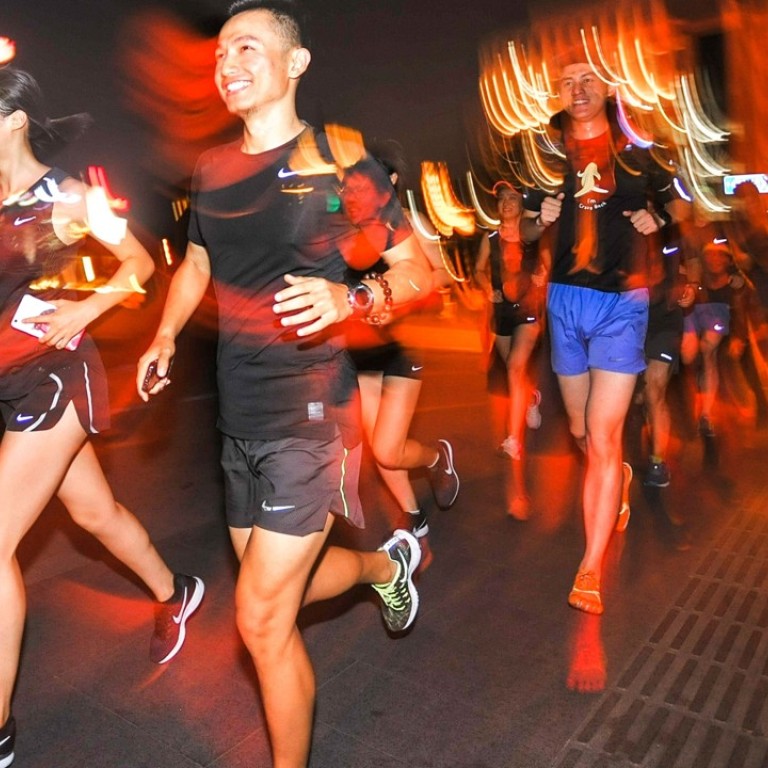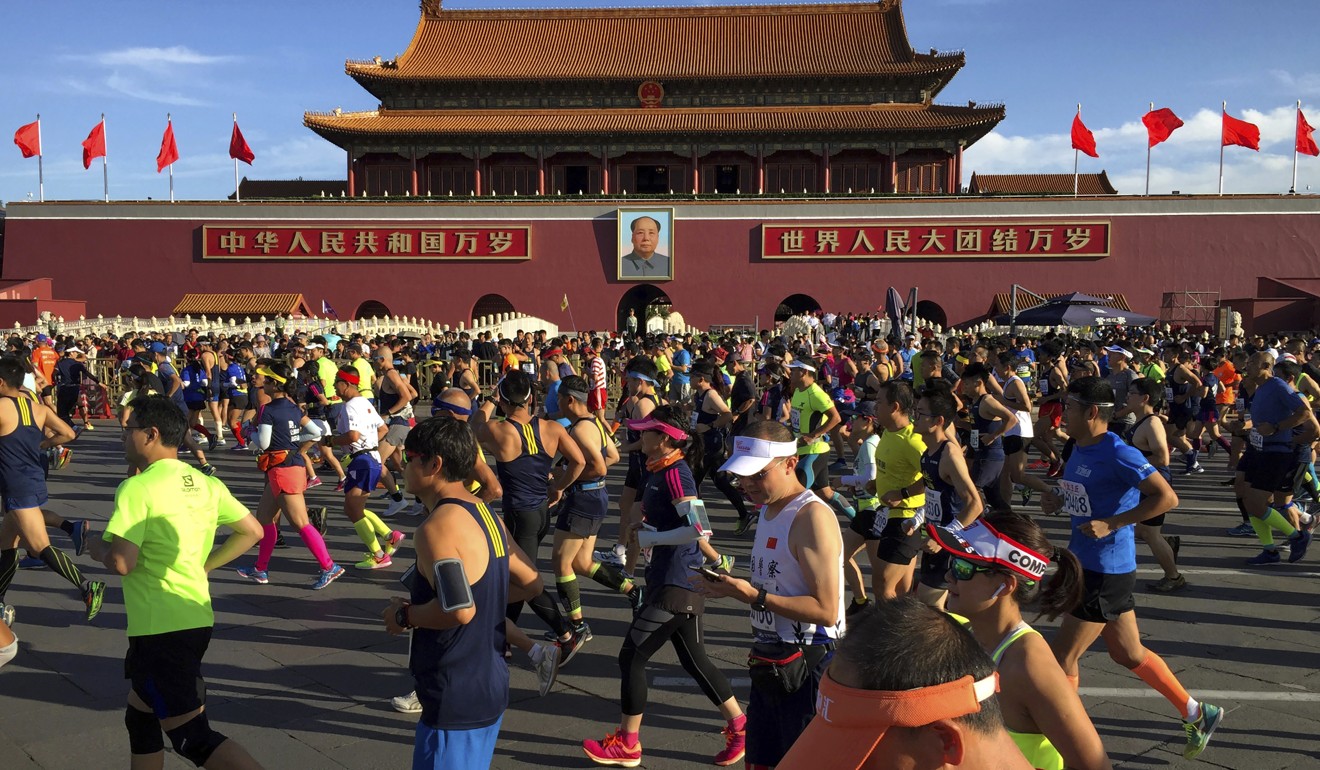
China’s running craze could spawn sportswear unicorn, says Kappa’s owner
Boss of China Dongxiang, which owns the iconic Italian brand in mainland China, predicts a US$1 billion domestic firm will emerge in the booming running sector
The pastime of running is growing rapidly in China as a burgeoning middle class with higher disposable incomes takes up exercise as part of a healthier lifestyle.
According to the Chinese Athletics Association (CAA), about five million runners took part in more than 1,000 competitive events in the mainland last year, roughly double the number in 2016.
But the numbers are still small when compared to many western countries, leaving plenty of room for growth.
That creates a golden opportunity for the makers and vendors of running gear, according to Zhang Zhiyong, CEO of China Dongxiang, which owns the Italian sportswear brand Kappa in mainland China. He said a domestic unicorn – a company valued at more than US$1 billion – is likely to emerge in the sector before too long.

“China now has hundreds of marathons being held every year, so the base of customers is enormous. If someone could dig deeply into the running category and do things properly, it’s very likely we will see the emergence of a domestic firm with a scale of more than US$1 billion in this segment.”
China only hosted 22 road running races nationwide seven years ago, a mere fraction of the 1,102 events recorded by the CAA in 2017.
The five million participants compares to an estimated 64 million people in the US who went jogging or running in 2016, suggesting the boom has a long way to go.
The sport’s increasing popularity is down to rising disposable incomes, better road conditions and the influence of a more health-conscious “western lifestyle” which advocates a greater work-life balance and taking better care of oneself, say analysts.

International brands still dominate the running sector. Nike, for example, tends to attract a lot of new runners or those who are slightly more advanced, while Japan’s Asics generally appeals to more affluent veteran runners.
Zhang said Kappa, which peaked in 2010 when it reported 4.26 billion yuan (US$670.9 million) in sales and 1.46 billion yuan in net profit but has since seen sales declines, would focus on niche sports areas including running and yoga. it will seek out better locations for new and existing shops and make the label more “distinctive” by going back to its roots.。
“We want to tell the old stories of Kappa, reviving the brand’s legacy and we hope to reap double-digit growth in revenue this year,” he said.
The company plans to open 150 new shops this year, 100 of them under the Kappa Kids banner. Childrenswear has been one of the company’s fastest growing segments this year, according to Zhang.
“One of the competitive edges Kappa has is its trendiness. However, that could in turn become a weak point for the label as the fashion tastes of customers change so fast these days,” said Hong Xueyu, an analyst at Guotai Junan Securities.
“The brand’s positioning in the China market should still be sports fashion as this is where its strength lies, but also to focus more on enhancing the functionality of its product offerings.”
The Hong Kong-listed company reported net profit of 805 million yuan in 2017, down from 870 million a year earlier. Sales fell to 1.35 billion yuan from 1.5 billion in 2016.

